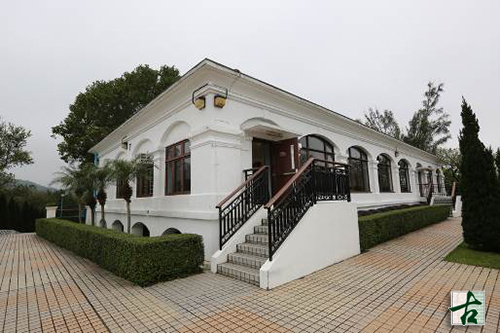Block 7 of the old Lei Yue Mun Barracks
The old Lei Yue Mun Barracks was one of the earliest and most important British Army fortifications in Hong Kong. Situated at the northeast corner of Hong Kong Island overlooking the eastern approach to the Victoria Harbour, Lei Yue Mun occupied a strategic position. In 1885, the military decided to construct a permanent infrastructure at Lei Yue Mun. In 1889, land was transferred to the War Department for constructing barracks at Lei Yue Mun. The Barracks consisted of the central area (main barracks), the western ridge (upper fort) and the headland (lower fort). The main barracks, built at different times from 1890 to 1939, mainly served as offices and married quarters for the British Army. By the 1890s, the fortifications at Lei Yue Mun had fully become an important point of coastal defence and continued to expand in the following decades.
By the 1930s, the strategic importance of Lei Yue Mun had declined considerably as a result of technological and tactical advances. On 19 December 1941, the Barracks fell to the hands of the Japanese in the Battle of Hong Kong. In the post-war period, the Barracks was used by the British Army as a training ground until 1987, after which the Barracks was returned to the Hong Kong Government for civil use. The central area and the western ridge have become the Lei Yue Mun Park and Holiday Village since 1988, whereas the military installations at the headland were restored to form the Museum of Coastal Defence which was opened in 2000.
Block 7 was built in 1890 to 1895 at the north end of the Barracks on top of a prestigious hill overlooking the Lei Yue Mun Pass. It is believed to be one of the earliest buildings constructed in the first phase of the barracks development. It was originally built as officers quarters for the Royal Artillery. In the post-war period, it has been used by the Hong Kong Military Service Corps (“HKMSC”) as a training centre.
The architectural style of Block 7 is “Colonial Vernacular”, which featured the characteristic wide open verandahs on three sides, a raised ground floor and a central “Jack-Roof”. The building is rectangular in plan, of single-storey brick construction and set on low segmental arches. Two ornamental brick and granite chimney stacks still exist. External architectural features include simple square Tuscan order columns which support the verandah roofs. The main entrance doorway has a segmental arch and central keystone. Some Classical plaster mouldings to the ceiling cornices still remain.
Block 7 of the old Lei Yue Mun Barracks was declared a monument in 2016.
Please refer to the Booking Guide on the website of Lei Yue Mun Park for information about admission to Lei Yue Mun Park.





